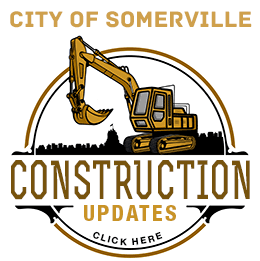By Marshall Collins
Last month, the Somerville Planning Board approved an application by US2, the city’s master developer partner for Union Square, to begin the revitalization of the area with its first LEED Gold project, a seven-story life science building. This week, US2 will come before the board once again as it determines whether to approve the proposed LEED Gold residential buildings and civic open space that will ensure equal access to Union Square’s future Green Line station.
The project restores contaminated land for productive use with new housing, commercial jobs, public open space as well as easy access to transit, and as the Planning Board review US2’s residential and open space plans, it’s become clear that the project’s holistic approach to sustainability is a common thread that unites each individual element of the project.
This is not the first time the project’s environmental performance has been examined – in June, the full project was found to comply with the objectives and regulations of the Massachusetts Environmental Policy Act (MEPA). The certification came after 18 months of analysis by US2 and state agency review, to ensure that “all feasible measures to avoid, minimize and mitigate damage to the environment to the maximum extent practicable” would be taken.
The MEPA process is an exhaustive review, and US2’s successful application was likely facilitated by the City of Somerville’s vision for sustainability and definition of a path toward climate resilience. The City has developed a variety of resources, including the Greenhouse Gas Inventory in 2016 and 2018, the Somerville Climate Change and Vulnerability Assessment in 2017 and, most recently, Somerville Climate Forward in 2018. US2 has ensured that its current design aligns with the City’s goals and with the following plans:
Resilient and public open spaces:
- Restoring contaminated land and utilizing 35 percent of that land for public open space
- Adding 14,800 square feet of new urban tree canopy above the planned plaza, increasing shade while combating the projected increases in high heat days
- Implementing green infrastructure to support tree growth to full maturity
- Designating tree species based on resilience characteristics
- Introducing 18,500 square feet of permeable surface to promote infiltration and reduce flooding
High performing and adaptive buildings:
- 100 percent of building energy needs will be met through green power sources for a minimum of 10 years
- Designing above-code walk performance, achieving between 12 and 14 percent greenhouse gas emission reductions
- Photo-voltaic ready construction and dedicating a “future proof” area for the integration of onsite renewable energy generation
Equitable low-carbon mobility
- Prioritizing pedestrian walkability, supporting by enhancements to the public realm
- Incentivizing bicycle use by adding 698 bicycle parking spaces
- Prioritizing green vehicles, with accommodations for low-emitting vehicles, car share and carpools
- Committing to mode share goals to achieve 60 percent non-auto trips
- Electric vehicle charging infrastructure and adaptive capacity for future expansion
- Providing access to and provision of transportation alternatives with investments in the Green Line, bus mobility and offsite infrastructure
Let’s hope that the City of Somerville continues to work with, and support, the advancement of the Union Square revitalization project. The sustainability benefits, not to mention the jobs, affordable housing, public space and increased transportation access are just a few of the undeniable benefits of this project.














We shall redefine what sustainable development means.
In the updated city staff report that can be accessed here (pages 5-6)
https://www.somervillema.gov/sites/default/files/20190814%20USQ_D2.2%20StaffReport%20revised.pdf
the Office of Sustainability (OSE) is not satisfied with the miniscule 12-14% reduction of greenhouse gases from buildings in D2.2 and D2.3, and suggests the adoption of PassiveHouse standards to achieve an emission reduction of a whopping 75% – THAT is what I call sustainable
Moreover, there doesn’t seem to be enough EV chargers planned in the garage. In the words of OSE ‘ The Applicant is at risk of building a parking structure that will quickly become outdated.’
OSE is right. Union Square deserves a lot better than what is being currently proposed
12-14% reduction is not enough! There is a PassiveHouse standard that could be followed to increase reductions to 75%. Don’t frame things as sustainable when there are efforts that can be done and aren’t being done. The Office of Sustainability is not satisfied with the plans for these new buildings.